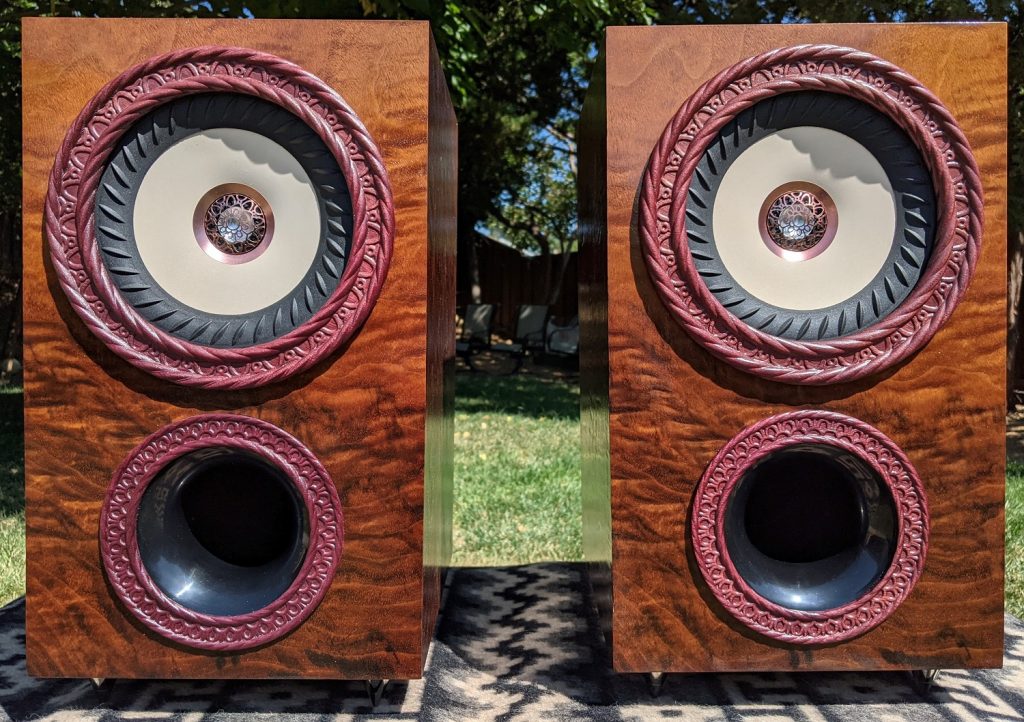
Angel Steps
Designer:
Bobby Kinstle
Project Category:
Bookshelf Speakers
Project Level:
Advanced
Project Time:
20+ Hours
Project Cost:
$500 – $1,000
Project Description:
A “bookshelf” speaker project designed to be ideal cabinets for the legendary TangBand W8-2314 8″ coaxial driver.
Design Goals:
I wanted some speakers that would make the most of these lovely drivers. They should be as beautiful as they sound and stand the test of time in my living room.
Driver Selection:
https://www.parts-express.com/Tang-Band-W8-2314-8-Coaxial-Full-Range-Woofer-264-9004 Part #264-9004
Enclosure Design:
The enclosures are made of 3/4 MDF with a double front. Internal volume is 0.9 cubic feet after accounting for the displacement of the driver and the port. We’re tuned to 49Hz. I wrapped the entire enclosure with angel step walnut veneer generously slathered with 100% tung oil and finally shellac on top. A set of pointy feet on the bottom isolate this already very damped enclosure from the table. Also pokes holes in the shelf too. Each enclosure weighs just under 30 pounds. The inside is heavily reinforced with MDF braces and corner joints.
Enclosure Assembly:
First I cut a sheet of MDF into an Ikea flat pack. Boards were glued in butt joints with brad nails to keep them from walking off on the wet glue when I clamped them. I intentionally cut the front and back a little larger and then used a flush trim bit to cut them an exact match to the tops and sides. The holes were router cut with a circle jig. The double front was added after that and then trimmed to match with a bottom bearing flush trim bit. Next every seam and joint was filled with bondo and sanded smooth. This is important because the clear finish will shrink and crush the veneer into every seam and be visible on the outside. I also added some nice binding posts. I thought they would be easier to reach and manipulate with my fingers, which is a big plus, but it also means you can’t lay the speaker flat on it’s back anymore without putting a thick pad underneath it.
A 3″ precision port provides very smooth bass response that extends very deep in my room. TB suggested using a forward facing 3″ port to improve vocals and the vocals come out great.
Lastly I made some cosmetic rings CNC cut from purple heart. I styled them after the concentric rings of the tweeter grill. Purple heart is a very challenging material to work with and this part ended up taking longer to get right than the entire rest of the project.
Crossover Design:
After looking at the impedance curve for the woofer I decided it would be best to ask TangBand for suggestions. They were happy to help and so I used their design with quality components. Schematic attached in the images. Note the tweeter is reverse polarity.
Tips & Tricks:
1. The best way to make purpleheart more purple is to bake it in the oven at 350F for 30 minutes. This will make it shrink a little and may warp slightly too. Make your rough cuts, bake, and then make your final dimensional cuts. Don’t worry, it’s purple inside too.
2. Speaking of purpleheart, after baking, keep the wood in the dark and finish sanding expediently. Coat with a UV blocking finish such as spar urethane to prevent UV from turning the purple wood brown. This will still happen but you can slow it down by a decade or so if careful.
3. Never use those slip on anti scuff pads on your pipe clamps. When you clamp something big and heavy they can slip off and eject your work piece onto the floor.
4. Stuffing can have a big impact on your midrange performance. If the box sounds hollow or like it has harsh mids, add some stuffing until it gets better. But too much stuffing can make the midrange dull and flat. The 3″ port made it easy to add stuffing without opening the enclosure.
5. Cold press veneering is pretty difficult on large panels without an industrial sized press. Invest in a vacuum bag system if you plan on working with raw wood veneer.
6. You can practice veneering on the back and bottom of your enclosure where mistakes aren’t visible.
7. Speakers cabinet spikes will damage your table. It’s pretty hard to put a 30 pound box onto those little metal pads they come with.
8. The people who designed your components can be an invaluable treasure trove of knowledge. Ask them how to make the most of their products and you’ll probably learn a lot from them.
9. Use ratchet straps to hang things for painting and finishing. Much faster and no worries of drips or touching a wet surface.
Conclusion:
The bass is pretty good. That’s one nice thing about using the 8″ version instead of the 6″ version. They reach all the way down into the bottom piano keys and bass guitar notes so no complaints there. The transition through the bass is smooth and highly musical. If you like lots of bass you may want a sub. Bass is nimble and articulate which is great on those deep strings.
Mids are warm and smooth almost like tube amp smooth. Vocals are forward and clear but never harsh, and male vocals sound about the same level as female vocals which is great as I find a lot of speakers are weak on male vocals and then get overwhelmed by female vocals. Horns are buttery smooth, especially trombone and saxophone. Strings are like wrapping yourself in a blanket of love. The amount of stuffing you put in the box has a big impact on the vocal range. Without stuffing I found the mids were harsh in some areas so I just added a handfull of poly fill at a time until I liked the sound. I’d say it’s a sold 50% loose fill.
The highs are delicate and crisp. They aren’t bright but I don’t feel like I’m missing anything and I usually prefer a bright speaker. Spanish guitar music really sings on these tweeters. It’s not that you hear the notes, its that you hear the pick sliding off the string and the musicians fingers gripping the fretboard. *Drooool.*
About the Designer:
I grew up in the Mojave Desert in a small community of scientists, craftsmen, and engineers. We were the kind of people who didn’t accept “it’s impossible” or “you can’t do that”. If I want something that doesn’t exist, I’ll just make one. Now I’m a thermal engineer in the computer industry and I currently hold 17 patents worldwide.
Project Parts List:
|
Part # |
Description |
Qty |
|
264-9004 |
Tang Band W8-2314 8″ Coaxial Full-Range Woofer |
1 |
|
240-715 |
Dayton Audio DSS4-BC Black Chrome Speaker Spike Set 4 Pcs. |
1 |
|
027-120 |
Audyn Cap Q4 22uF 400V MKP Metalized Polypropylene Foil Crossover Capacitor |
1 |
|
027-422 |
Dayton Audio DMPC-4.7 4.7uF 250V Polypropylene Capacitor |
1 |
|
004-12.5 |
Dayton Audio DNR-12.5 12.5 Ohm 10W Precision Audio Grade Resistor |
1 |
|
004-25 |
Dayton Audio DNR-25 25 Ohm 10W Precision Audio Grade Resistor |
1 |
|
004-3.3 |
Dayton Audio DNR-3.3 3.3 Ohm 10W Precision Audio Grade Resistor |
1 |
|
091-1245 |
Dayton Audio BPA-38G HD Binding Post Banana Jack Pair Gold |
1 |
|
268-350 |
Precision Port 3″ Flared Speaker Cabinet Port Tube Kit |
1 |

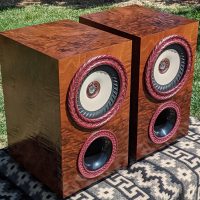
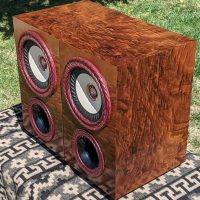
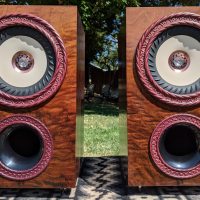
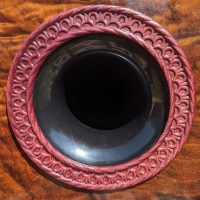
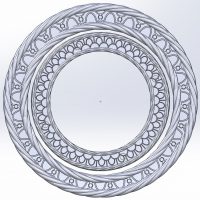
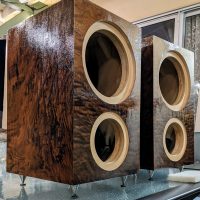
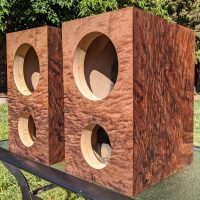
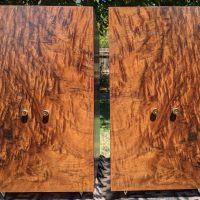
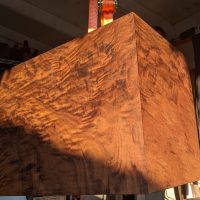
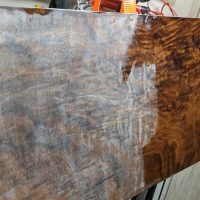
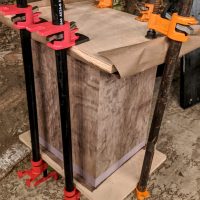
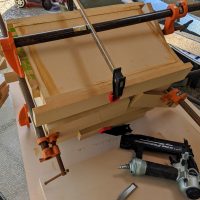
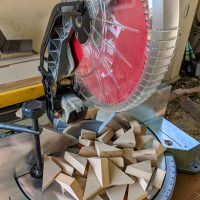
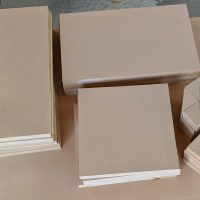
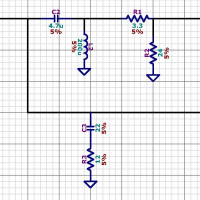
Nice project. Quick question though; Your schematic doesn’t show an inductor on the woofer. Is that correct?
Hi Glenn, yes that is correct. It’s more of a notch filter than a traditional low pass filter